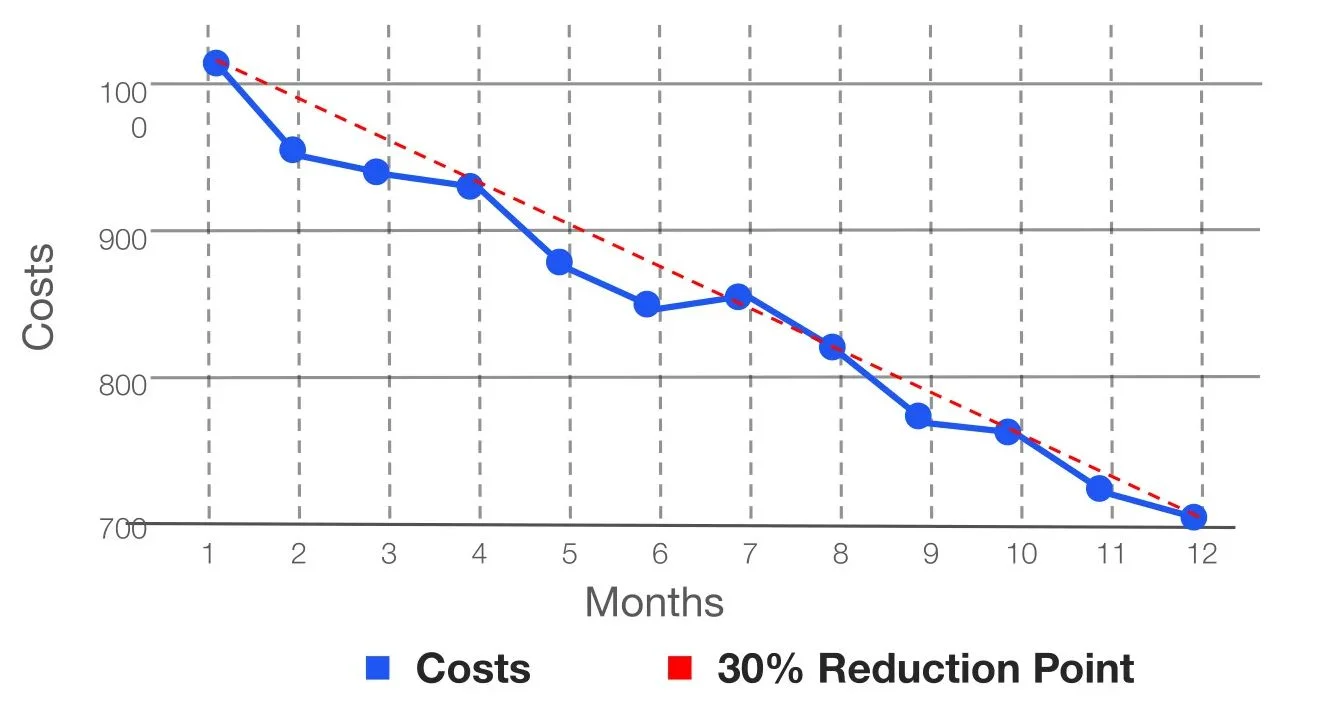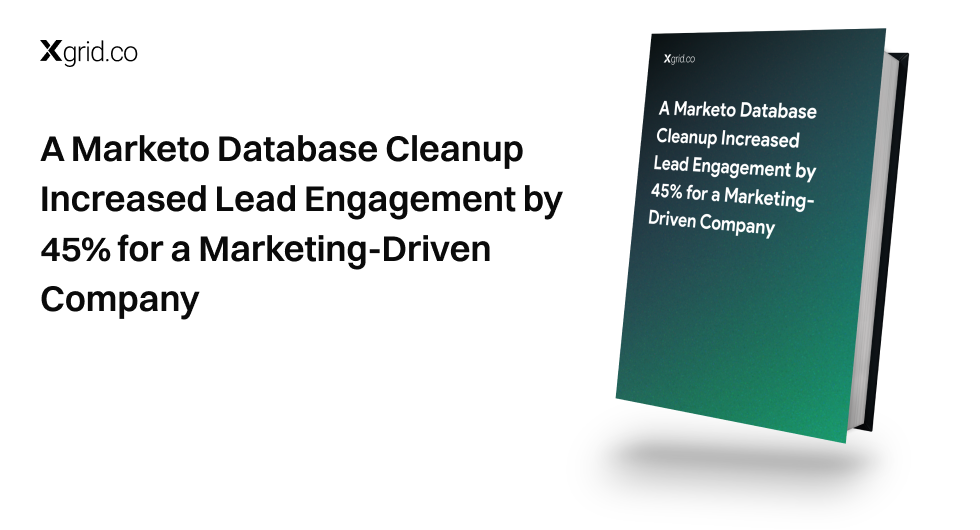Digital Transformation of a US based Enterprise
Client Overview
Company: US-based Enterprise
Industry: Service and Installation
Core Services: Structured Cabling, Desktop & Server Relocations, On-Site Services, Data Networking Infrastructure
Goal: To implement a digital transformation strategy that would streamline workflows, enhance service reliability, reduce costs, and improve overall operational efficiency, all while managing the risks associated with large-scale change.
How does a 100-year-old service provider stay relevant in the digital age?
A US-based Enterprise, specializing in structured cabling, server relocations, and on-site services, faced growing challenges from outdated systems and workflows.
Their legacy infrastructure created inefficiencies, and fragmented communication, and limited their ability to adapt to modern market demands.
Recognizing the urgency to evolve, the client embarked on a digital transformation journey to modernize operations, improve service reliability, and streamline costs while maintaining stability during the transition.
Challenges Faced by the Client: Inefficient Legacy Systems, Fragmented Workflows, and Communication Gaps Hampering Adaptability to Modern Market Needs
US-based Enterprise, a long-established service provider, faced multiple challenges common in legacy companies. The need for digital transformation became evident as these issues began to impact service quality, costs, and client satisfaction.
- Slow and Inefficient Legacy Systems: The company’s old systems were unable to handle the data processing requirements of modern, digital workflows, resulting in delays.
- Fragmented Workflows: Disparate systems led to siloed operations and made it difficult for departments to coordinate efficiently.
- Profit Cannibalization Concerns: Leadership was cautious about how digital changes might impact existing revenue streams and profitability.
- Adaptability to Modern Market Needs: Outdated processes prevented our client from responding dynamically to customer demands and competitors.
- Communication Gaps: Severe communication bottlenecks across departments made response times slow, impacting service reliability and customer satisfaction.
Solution Strategy: Modern Infrastructure, Market Analytics, Improved UI, and Centralized Communication
Our client adopted a comprehensive digital transformation strategy designed to modernize their operations while minimizing disruption. This approach was strategic and multi-phased, addressing each challenge with a targeted solution:
- Modern IT Infrastructure and Digital Workflow Implementation: The company transitioned from paper-based and legacy systems to agile IT infrastructure and digital workflows, greatly enhancing processing speeds, data accuracy, and inter-departmental collaboration.
- Advanced Market Analytics: By integrating advanced analytics, our client gained insights into customer preferences, enabling the company to better align its products and services with current market demands.
- User-Friendly Interface Design: An overhaul of the user interface (UI) created a more intuitive, satisfying experience for employees and clients, reducing training time and increasing productivity.
- Phased Rollout: New systems were introduced gradually to limit financial disruptions. This cautious, phased approach helped ensure a positive return on investment and allowed the company to make adjustments based on initial feedback.
- Centralized Communication Platform: A central platform was integrated to facilitate real-time communication and collaboration, reducing the delays previously caused by fragmented workflows.
Technology Stack: Building Blocks of Transformation
The transformation of our client was underpinned by a robust technology stack, specifically chosen to meet the operational needs of a modernized company.
- 3-Tier App Architecture: The architecture enhanced security through role-based access control (RBAC) for ERP functions, enabling different levels of access depending on user roles.
- ERP Solution (Microsoft Dynamics 365): Integrated ERP functionalities improved project management and enabled deep operational workflows, making day-to-day processes more streamlined and manageable.
- Cross-Platform Mobile App: Designed for both iOS and Android, this mobile app enhanced usability for field workers and in-office staff, making it easier to access data and communicate from anywhere.
- Database Synchronization and Notification Services: With an ERP database at the core, the system allowed seamless data synchronization and provided real-time notifications, keeping all team members updated on project statuses.
- Legacy System Compatibility: We used SQL legacy databases and enabled data synchronization with new systems, ensuring continuity without disrupting legacy data.
Results and Impact: Digital Transformation Yields High Service Reliability, Efficiency Gains, and Cost Reductions
The transformation led to measurable improvements across several metrics, demonstrating the effectiveness of its new systems and processes.
- Service Reliability: Achieved 98% reliability in service delivery, allowing the company to maintain a high standard of consistency in operations.
- Cost and Time Efficiency: The transition to digital processes led to a 30% reduction in both operational time and costs, generating significant financial savings.
- Database Optimization: An 87% reduction in database size facilitated quicker data retrieval and better space management, reducing server costs and improving response times.
- Operational Efficiency: Achieved an 800x faster check-in/check-out process due to digital check-ins, transforming daily operations and greatly enhancing productivity.
- Improved Platform Availability: With digital transformation, platform availability tripled, ensuring that resources were accessible to employees when needed without delays.
Key Performance Metrics: Old Model vs. New Model
The success of the digital transformation can be quantified through a comparative analysis of key performance metrics:
|
Metric |
Old Model |
New Model |
| Time Savings | Limited | 50% Time Savings |
| Platform Availability | Average | 3x Increase |
| Database Efficiency | High storage needs | 87% Size Reduction |
| Check-in/Check-out Efficiency | Manual, time-intensive | 96% Faster |
| Cost Reduction | Standard operational expenses | 30% Overall Cost Reduction |
| User Satisfaction (UI/UX) | Basic interface required training | Intuitive design, reduced training |
Additional Benefits and Use Cases
Digital transformation went beyond operational metrics, enabling other impactful improvements:
- Native App Accessibility: The mobile app was made available on four major platforms (desktop, iPad, Android, and iPhone), offering flexibility for remote work and reducing dependencies on office-bound operations.
- Enhanced Digital Processes: Processes previously requiring paper, such as attendance and reporting, were digitized. This improved tracking for job check-ins/outs and eliminated paperwork-related inefficiencies.
- Proximity-Based Tracking and Bluetooth Integration: Implemented Bluetooth beacons and proximity sensors for faster check-ins. This not only saved time but also reduced inaccuracies, as the system automatically recorded locations and timestamps.
Phased Transformation Roadmap
We followed a three-phase roadmap to ensure a structured and secure transition:
| Phase 1 – Assessment and Strategy (Months 1-2) | Phase 2 – Launch and Early Execution (Months 3-4) | Phase 3 – Scaling and Integration (Months 6-8) |
|
|
|
Sustaining Transformation through Efficiency Gains
Our strategy ensured that transformation gains were sustainable and scalable:
- Resource Optimization and Database Management: An 80x improvement in operational efficiency was achieved by optimizing resources and reducing database size.
- Cost Reduction Over Time: With streamlined workflows, our client realized a 30% reduction in operational costs over four quarters, driven by reductions in time, labor, and resource allocation.
Summary
The digital transformation for our client stands as a testament to the power of phased, well-structured change management.
By addressing legacy system inefficiencies, implementing a modern IT infrastructure, and adopting a data-driven approach, we successfully transformed its operations.
The result was not only an increase in efficiency and cost savings but also a new level of adaptability and resilience, positioning our client as a forward-thinking leader in service and installation.







